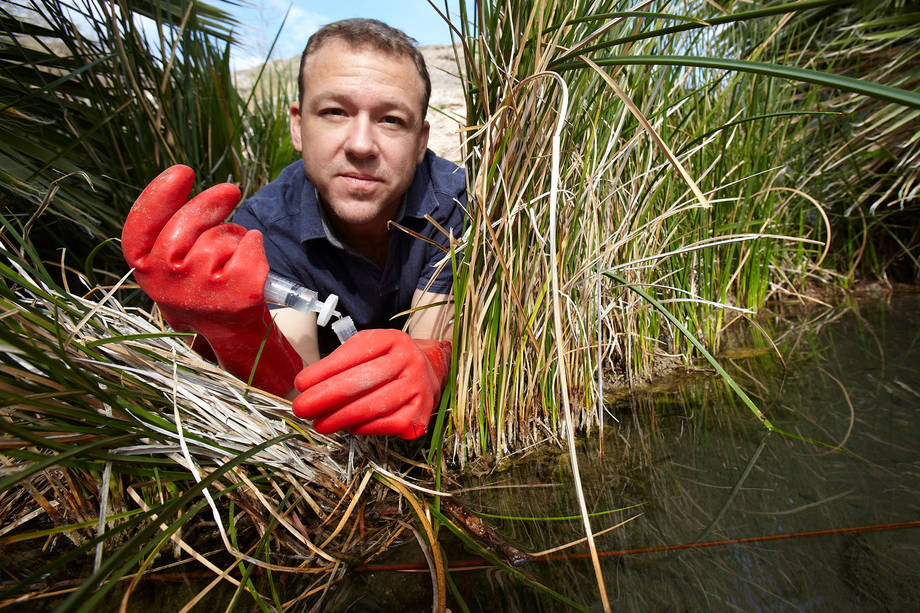Nevada hot spring may offer clues about life on other planets

In Northern Nevada’s Great Boiling Spring, strange microscopic creatures thrive in water hot enough to kill you.
Scientists led by UNLV researcher Brian Hedlund are studying the microorganisms in this near-200-degree environment in search of clues about life on Earth and elsewhere.
Using a new $900,000 grant from NASA, the scientists hope to learn how these microbes survive in such an extreme environment.
Hedlund said what they find out could expand our understanding of how life began on Earth and increase our chances of recognizing life on other planets in our solar system and beyond.
“We know a little about half the creatures on our own planet and basically nothing about the other half,” the life sciences professor said. “We believe that understanding all life on Earth will allow us to understand if life can exist elsewhere.”
Really hot spring
Hedlund and others have been studying the wide array of single-celled inhabitants of the Great Boiling Spring since 2004, after he learned about the place from a no-frills website for hot-spring enthusiasts.
There are closer springs he could study — this one is about about 100 miles northeast of Reno and roughly 500 miles from his lab at UNLV — but it’s hard to match the access he has.
The spring sits on private land owned by a rancher Hedlund described as “the greatest human being on Earth.”
The man happily opens his gates and even his home and other buildings when Hedlund shows up to conduct complicated experiments accompanied by a few dozen researchers.
“He gave me my own key,” Hedlund said. “He’s just tremendously accommodating.”
The rancher’s reward was to have a new species of bacteria named after him: Thermocrinis jamiesonii.
Hedlund said at least 30 scientific articles and papers have been written based on what’s been found in the Great Boiling Spring.
In the process, Hedlund and company have described two new biological classes and one new biological order. (As a refresher, dear human, your class is mammal, and your order primate.)
Most of the microbes Hedlund studies are about 1 micron in length. If lined up head to tail, about 1,000 of them would stretch across the head of a pin.
Collaborating on the latest study at the spring are researchers from Lawrence Livermore National Laboratory, Stanford University and California State University, San Bernardino. They plan to use the new NASA grant to build on DNA work paid for with previous funding from the space agency.
Focus on ‘biologically weird’
This time around, researchers will focus on five major groups of microbes Hedlund described as “biologically weird.” That’s not meant as an insult, either.
Scientists have been studying microorganisms and growing them in the lab for the better part of 130 years, but there are whole varieties of them that stubbornly refuse to be reproduced in a laboratory setting.
These things aren’t merely unlike other microbes. They are “probably as different as plants are from people,” Hedlund said.
They are inherently weird because “nobody knows anything about them.”
By asking simple questions about these tiny organisms, scientists could unlock perhaps the biggest question of all: Does life exist elsewhere in the universe?
Hedlund doesn’t know the answer yet, but like any good Las Vegas researcher, he’s willing to lay some odds.
“I think it’s probably likely, given the numbers,” he said. “I don’t know, but if I had to bet on it, I’d bet there is life other places.”
Contact Henry Brean at hbrean@reviewjournal.com or 702-383-0350. Follow @RefriedBrean on Twitter.